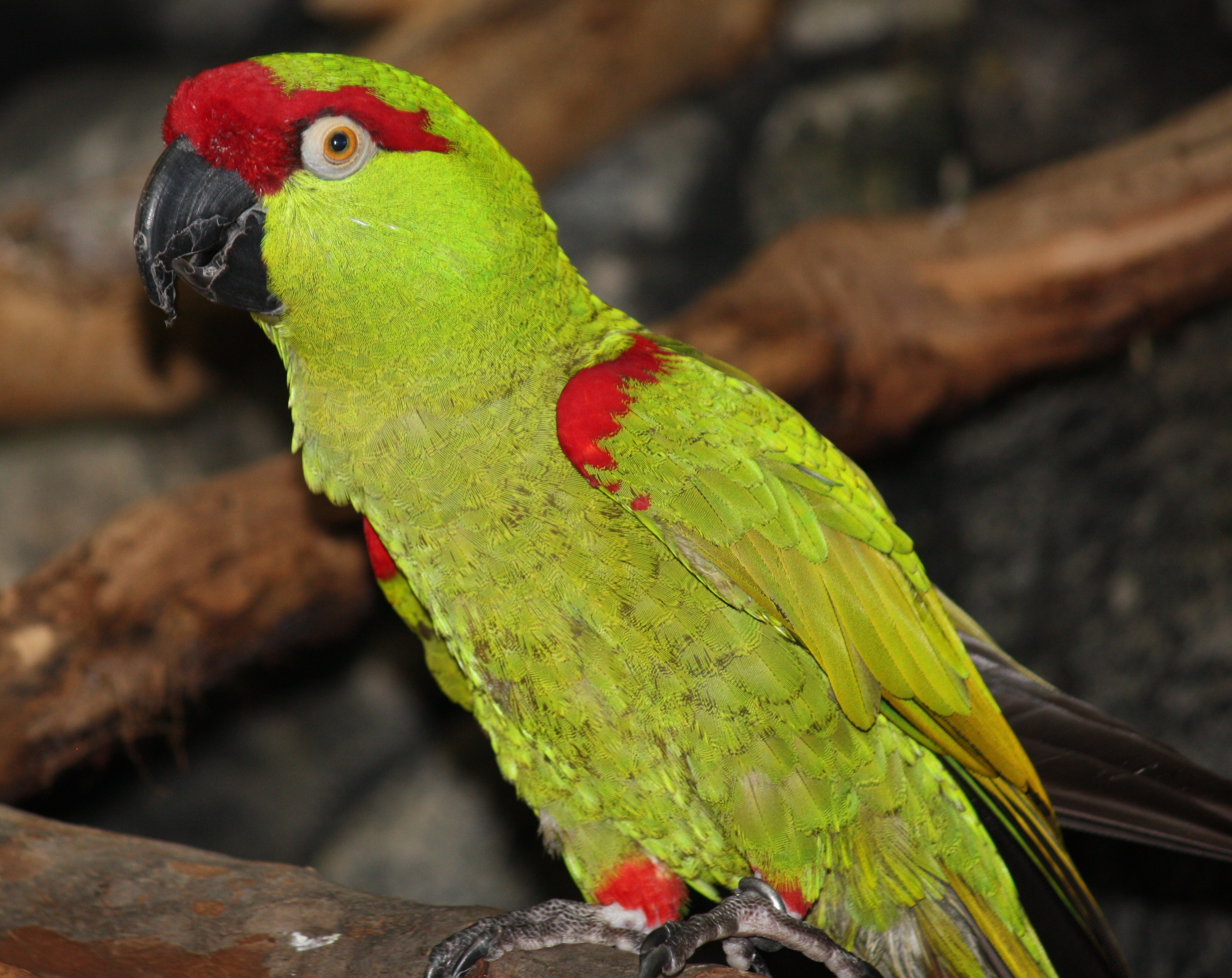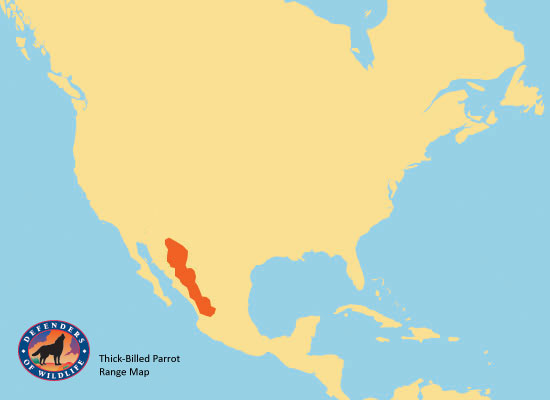Alex Bisaillon
 |
| Thick Billed Parrot ( |
 |
| Thick billed parrot egg ( |
Ecology of Thick Billed Parrots
| |
| The distinct yellow strip on the underside of the parrots wings ( |
A Shrinking Habitat
The billed parrot is unique in that it is the one of two parrot species native to the U.S. Unfortunately, the thick billed parrot, no longer survives in the United States, as they were subject to unregulated hunting and driven from their homes in Southeastern Arizona and possibly New Mexico, shrinking their range to just a narrow corridor in the Sierra Madre Occidental of Mexico. The last thick billed parrot flock was seen in the U.S. in 1938, and their current range still leaves them 80 miles short of the U.S. border. The think billed parrot migrate seasonally, leaving the more arid climates of Chihuahua and Northwestern Durango after the summer breeding period to rainier, warmer areas as far as 600 miles south. Unfortunately, these areas are made up largely of mature and old forests that have been degraded and in some cases destroyed by humans Even worse for the parrots, there is currently no plan in place to add more critical habitat for parrots. (information from the recovery plan and defendersofwildlife.com)
 |
| Seasonal habitat of thick billed parrots (birdphotos.com) |
 |
Thick billed parrot's current habitat (defenders of wildlife) |
Listing Information
The thick billed parrot is listed as endangered in the U.S., with the species being added to the list on 06/02/1970. (http://ecos.fws.gov/speciesProfile/profile/speciesProfile.action?spcode=B00W)
Thick billed parrots were listed due to the combination of early over-hunting from U.S. settlers in the late 1800's and early 1900's and habitat loss in Mexico. Continued habitat loss is the biggest problem for thick billed parrots, as human logging in forests has caused widespread habitat loss, while grazing livestock and human prevention methods have led to higher intensity fires, which are extremely detrimental to the ecosystem. Other threats to the parrots include habitat shift due to climate change, which makes the parrots habitats more arid, and the threat of being captured for sale in the pet trade. (information from recovery plan)
Recovery Plan
Since the thick billed parrot is no longer present in the U.S., the main recovery efforts and the development of the recovery plan have taken place in Mexico. The Mexican government developed the PACE plan, which focuses on existing populations in Mexico as opposed to the historical range of the parrot going into the U.S.
The Mexican government has focused the recovery strategy of the thick-billed parrot, on five key
elements: "1) protect existing populations and their habitat;
2) survey, monitor, and research the population and habitat;
3) manage habitat for future thick-billed parrot population growth;
4) reduce or eliminate threats, such as illegal trade, timber harvesting, and high-intensity
fire; and,
5) build partnerships and educate the public." These elements culminate in the ultimate goal of getting thick billed parrots de-listed, along with recovering the population in a sustainable habitat. The U.S. has a more secondary role in recovery, as U.S. efforts focus mainly on helping Mexico while monitoring and assessing their data, all while trying to keep the old habitat of the parrot intact so that migration back could be possible. (information taken from recovery plan)
Sources: http://www.defenders.org/thick-billed-parrot/basic-facts
http://ecos.fws.gov/docs/recovery_plan/Thickbilled%20Parrot%20Recovery%20Plan%20Addendum%20to%20PACE_1.pdf
Other links: https://www.youtube.com/watch?v=fTgFH7Wy-Hs
https://www.youtube.com/watch?v=0wMOxZIGPws
Other links: https://www.youtube.com/watch?v=fTgFH7Wy-Hs
https://www.youtube.com/watch?v=0wMOxZIGPws
No comments:
Post a Comment